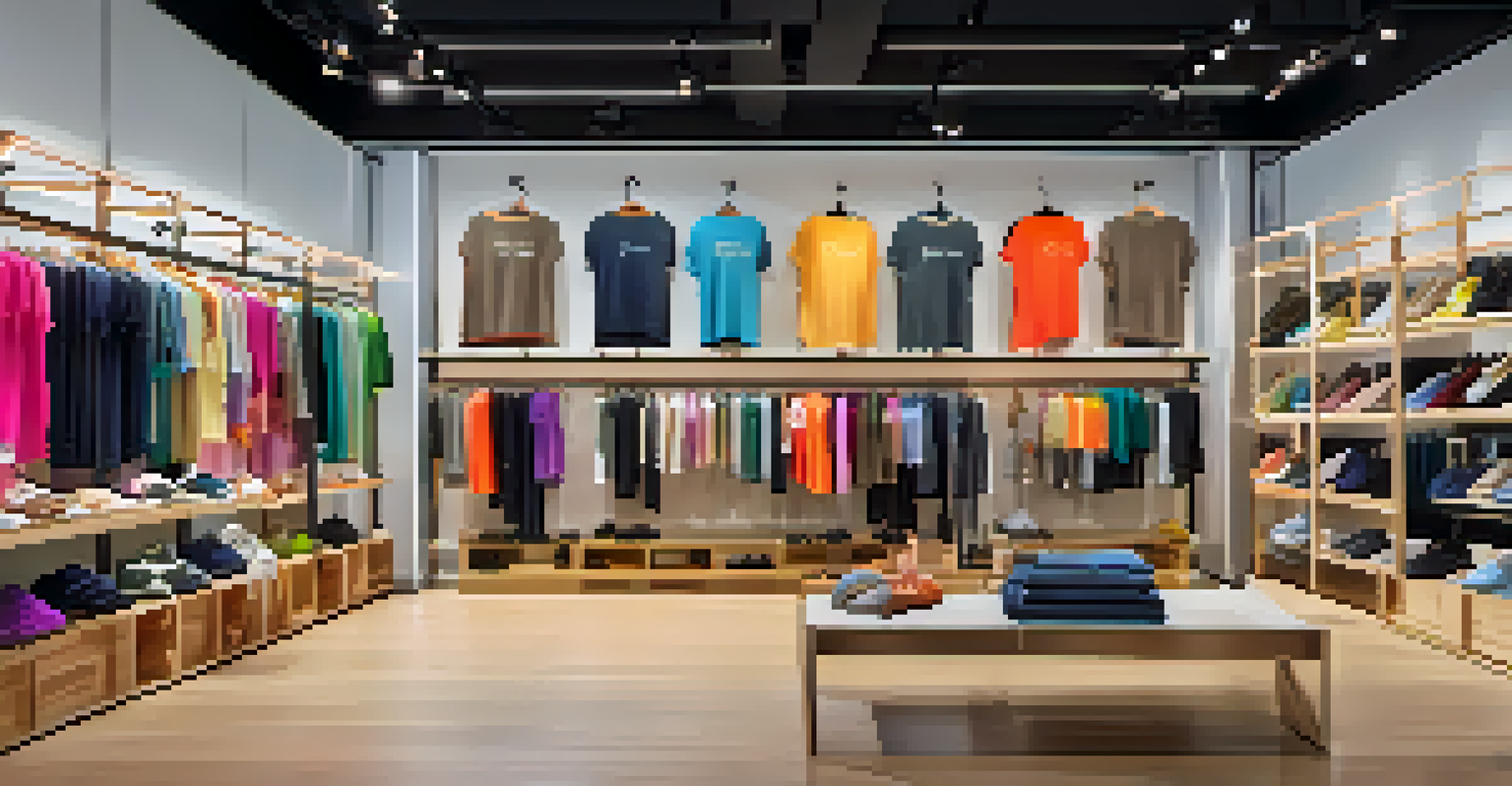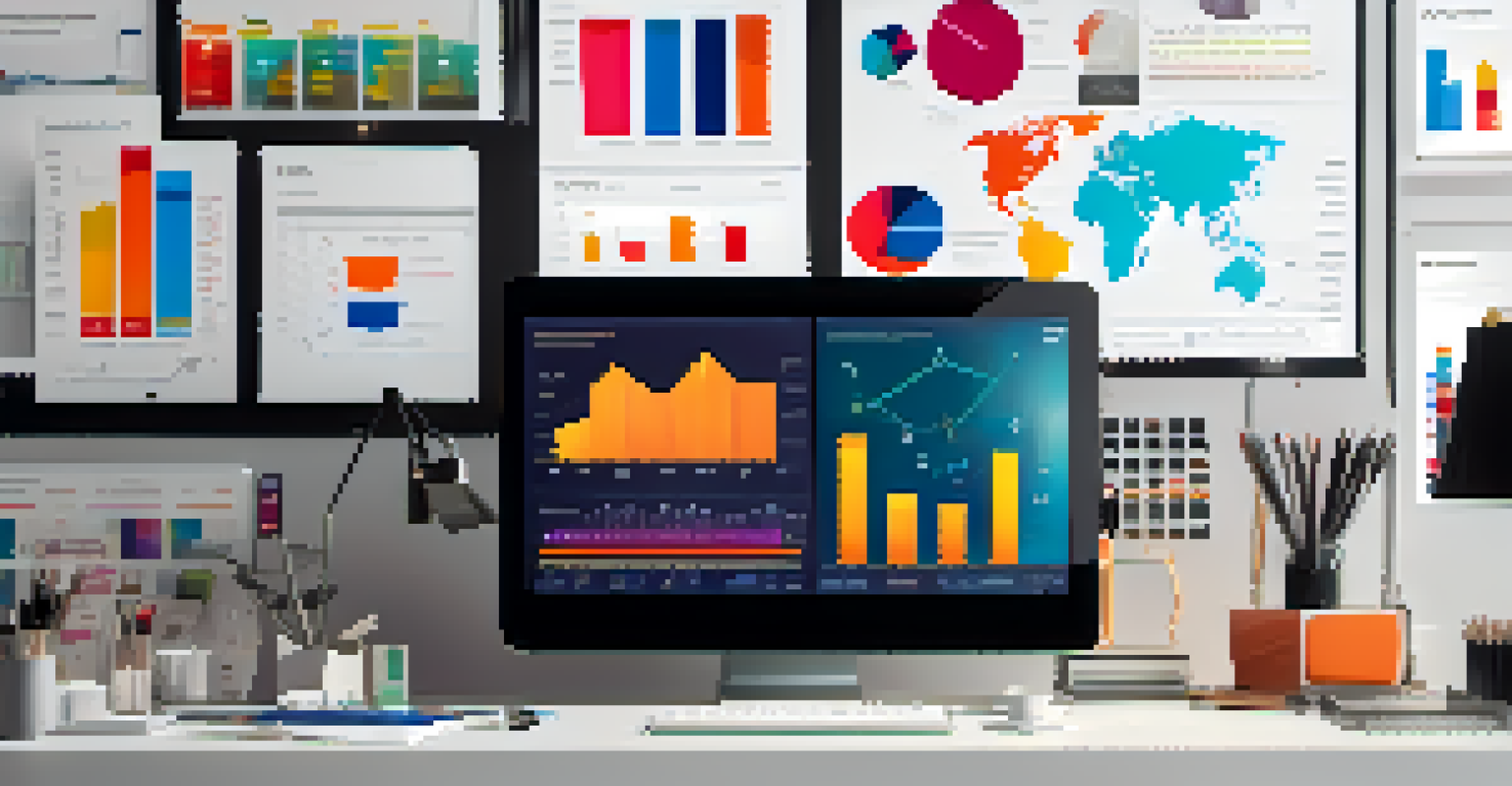Fashion Data Analytics: Understanding Consumer Behaviors

What is Fashion Data Analytics?
Fashion data analytics involves collecting and analyzing consumer data to understand shopping behaviors and preferences. This process helps brands make informed decisions about inventory, marketing strategies, and product designs. By leveraging data from various sources, such as sales figures and social media interactions, companies can tailor their offerings to meet customer demands effectively.
In the age of big data, brands that can harness the power of analytics will thrive, adapting quickly to the ever-changing consumer landscape.
For instance, a brand might notice an increase in searches for sustainable clothing. By analyzing this trend, they can adjust their product lines to include more eco-friendly options, ultimately attracting a broader audience. This analytical approach creates a feedback loop where consumer preferences directly influence business strategies, leading to more successful outcomes.
In essence, fashion data analytics is like having a crystal ball that reveals what consumers want before they even know it themselves. It empowers brands to stay ahead of trends, ensuring they remain competitive in the ever-evolving fashion landscape.
The Role of Consumer Behavior in Fashion Trends
Consumer behavior is at the heart of fashion trends. Understanding how consumers think and act allows brands to create compelling products that resonate with their target audience. Factors like age, lifestyle, and social influences play a significant role in shaping these behaviors, which can be tracked through data analytics.

For example, a surge in interest around athleisure wear can be linked to the growing trend of health and fitness. Brands that recognize and adapt to these shifts quickly can capitalize on the demand, introducing lines that align with consumer interests. This responsiveness not only boosts sales but also enhances brand loyalty.
Fashion Data Analytics Explained
Fashion data analytics helps brands understand consumer behaviors and preferences to inform inventory and marketing strategies.
Ultimately, analyzing consumer behavior provides valuable insights that guide design choices, marketing campaigns, and even pricing strategies. By being attuned to these behaviors, fashion brands can navigate the complexities of the market with greater ease.
How Data Analytics Influences Product Development
Data analytics significantly impacts product development in the fashion industry. By analyzing consumer data, brands can identify gaps in the market and create products that fulfill unmet needs. This process helps ensure that new collections are aligned with current consumer interests and trends.
Data is the new oil, and for fashion brands, it can fuel innovation and drive meaningful connections with consumers.
For instance, if data shows a growing demand for plus-size clothing, brands can respond by expanding their size offerings. This not only caters to a wider audience but also demonstrates inclusivity, a value that resonates with modern consumers. By being data-driven, brands can make strategic decisions that enhance their product lines.
In this way, data analytics serves as a roadmap for product development, guiding brands towards innovations that are more likely to succeed in a competitive marketplace. It's about making choices that are both creative and informed.
The Impact of Social Media on Consumer Insights
Social media has become a powerful tool for gathering consumer insights in the fashion industry. Platforms like Instagram and TikTok provide a wealth of data on what styles are trending and how consumers engage with brands. By analyzing likes, shares, and comments, companies can gain a better understanding of their audience's preferences.
For example, a viral fashion trend often starts on social media, where influencers showcase specific styles. Brands that monitor these trends can quickly adapt their marketing strategies to capitalize on the buzz, ensuring they remain relevant and visible. Social media analytics helps brands connect with their audience in real-time.
Consumer Behavior Shapes Trends
Analyzing consumer behavior allows brands to create products that resonate with their audience, boosting sales and loyalty.
In essence, social media serves as both a mirror and a megaphone for consumer behaviors. It reflects current trends while amplifying voices that shape fashion preferences, making it an invaluable resource for data-driven decision-making.
Using Predictive Analytics for Trend Forecasting
Predictive analytics plays a crucial role in forecasting fashion trends. By analyzing historical data, brands can identify patterns and make predictions about future consumer behaviors. This foresight enables companies to stay ahead of the curve and plan their collections strategically.
For instance, if data indicates that certain colors or styles have been popular in previous seasons, brands can use this information to inform their upcoming designs. Predictive analytics helps mitigate risks associated with new launches, increasing the chances of success in the marketplace.
In this way, predictive analytics acts as a compass for fashion brands, guiding them through the unpredictable landscape of consumer preferences. It transforms uncertainty into informed decision-making, allowing brands to navigate trends with confidence.
Challenges and Limitations of Fashion Data Analytics
While fashion data analytics offers numerous benefits, it also comes with challenges and limitations. One major hurdle is data privacy; consumers are increasingly concerned about how their information is used. Brands must navigate these concerns while still leveraging data to inform their strategies.
Moreover, the sheer volume of data can be overwhelming. Companies need robust systems and expertise to analyze this information effectively, which can be a barrier for smaller brands. Balancing the need for insights with ethical considerations is crucial in today's data-driven world.
Predictive Analytics for Trends
Predictive analytics enables brands to forecast trends by identifying patterns in historical data, enhancing strategic planning.
Despite these challenges, brands that approach data analytics thoughtfully can reap significant rewards. Being aware of the limitations encourages companies to adopt best practices and build trust with their consumers, ultimately leading to better outcomes.
The Future of Fashion Data Analytics
The future of fashion data analytics is bright and full of potential. As technology continues to advance, brands will have access to even more sophisticated tools for analyzing consumer data. This evolution will enable deeper insights into consumer behaviors, preferences, and emerging trends.
For instance, artificial intelligence (AI) and machine learning are already transforming how data is analyzed, allowing brands to predict trends with greater accuracy. This technology can help companies fine-tune their marketing campaigns and product offerings, ensuring they resonate with their audience.

In conclusion, the future of fashion data analytics promises to create a more personalized shopping experience for consumers. Brands that embrace these advancements will not only stay ahead of trends but also foster stronger connections with their customers.